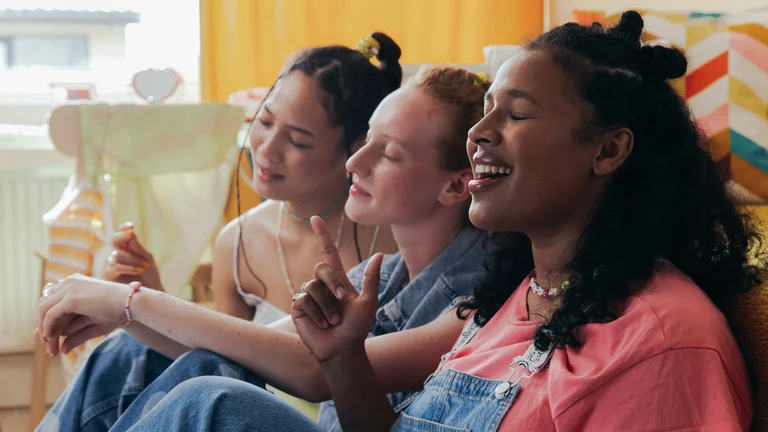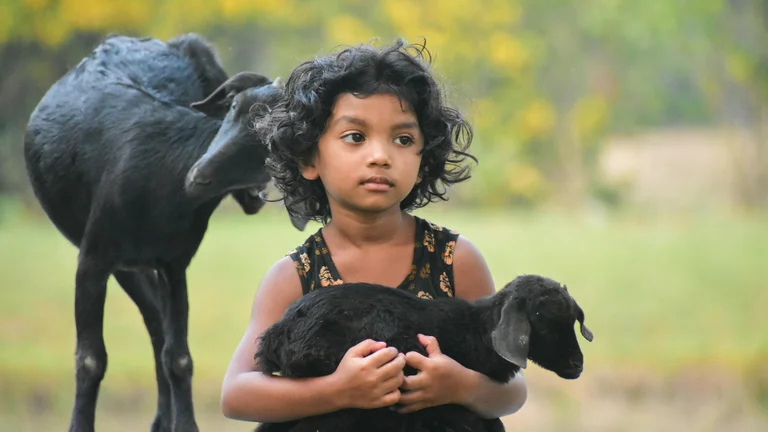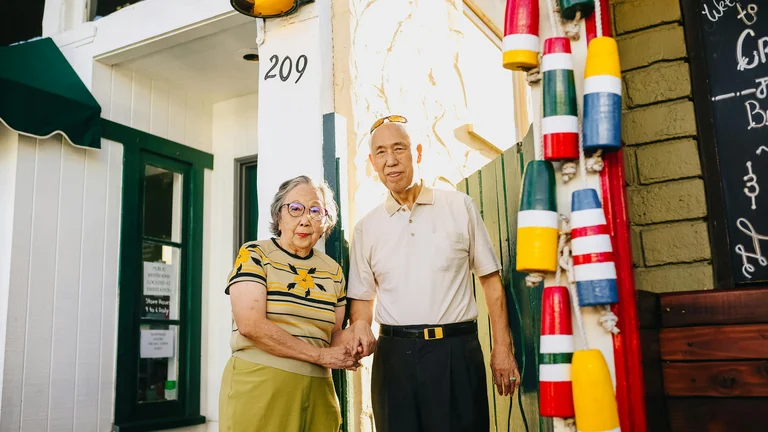Karaoke Scenes as a Cultural Bridge in K-Dramas

Karaoke scenes in K-Dramas often function as more than just lighthearted interludes; they act as a unique cultural bridge that connects characters and audiences alike. These moments richly portray social dynamics within Korean society while providing insight into interpersonal relationships. Karaoke, known as "노래방" (noraebang) in Korea, is a staple of Korean social life, a place where reserved individuals can loosen up, and friendships or romantic connections can deepen organically.
Throughout various dramas, karaoke scenes reveal subtleties of character development and sometimes communicate advance narrative arcs without explicit dialogue. This dual role makes karaoke a crucial storytelling device. The vibrant, playful, and emotionally charged atmosphere encourages characters to express vulnerabilities or hidden desires, unusual in the typically stoic, indirect communication style prevalent in Korean culture.
For example, enthusiasm or reluctance in karaoke participation may hint at a character’s socio-emotional state—someone dominating the mic may be seeking attention or confidence boosts, whereas a hesitant character might wrestle with insecurity or emotional distance. Watching these subtle cues unfold enriches the viewing experience beyond mere entertainment, providing cultural context about Korean values related to collective harmony and personal expression.
In addition, karaoke scenes create opportunities to showcase the music industry element within dramas, from popular K-pop hits to classic ballads that resonate with the plot’s tone. These musical selections often complement story events, amplifying emotional resonance and encouraging audience engagement through familiar or nostalgic melodies.
The setting of a noraebang itself also adds a distinct layer; its cozy, sometimes cramped private rooms with colorful neon lighting and hi-fi sound systems cultivate a close, intimate atmosphere. This physical environment contrasts sharply with the characters’ everyday surroundings, symbolically providing a safe space for emotional release or confrontation.
Memorable Karaoke Scenes that Define K-Drama Dynamics
Iconic karaoke scenes span various K-Dramas, each bringing fresh nuances that emphasize character traits or story turning points. Delving into these scenes provides clarity on why karaoke is such an enduring motif, revealing diverse narrative strategies that directors employ.
One unforgettable scene occurs in the hit drama "Reply 1988," where the friends gather at a noraebang after a day filled with adolescent struggles. The karaoke session there serves as a collective coping mechanism, mixing humor, jealousy, and heartfelt moments. Their song choices reflect youthful rebellion and nostalgia simultaneously, allowing viewers to grasp the 1980s Korean youth culture and socio-economic atmosphere vividly.
Similarly, in the romantic series "Crash Landing on You," the karaoke scene between the protagonists allows subtle tension and attraction to emerge. The interplay of shy singing and teasing banter marks an organic progression of their relationship outside typical high-stakes plot elements, hence grounding the story emotionally.
In "Weightlifting Fairy Kim Bok-joo," karaoke moments inject a lively, youthful energy, highlighting the camaraderie among athlete friends. These sequences are often crafted with light humor and genuine warmth, reinforcing the drama’s overall theme of growth and friendship.
These examples underline how karaoke scenes deliver emotional texture. They anchor characters in social reality and break narrative monotony, balancing moments of high drama or comedy with relaxed, interactive spaces.
The Role of Music Choice and Song Selection
The impact of notable karaoke scenes frequently depends on the meticulous song selections aligned with characters’ personalities and narrative needs. Music choice in K-Dramas is intentional, often reflecting a character’s inner world or foreshadowing developments.
Ballads typically accompany introspective or emotionally intense moments. For instance, a character singing a heartfelt ballad signals vulnerability or healing, serving as an unspoken admission of pain or hope. On the other hand, upbeat tracks might illustrate a celebratory or rebellious mood, demonstrating joy, friendship, or playful competition among characters.
Many dramas opt for well-known Korean pop songs or classic Korean hits to evoke nostalgia or cultural pride. It’s common for viewers to recognize the songs instantly, which strengthens emotional connections and immersion. Sometimes, even international songs are incorporated, reflecting globalization’s influence within Korea’s evolving entertainment landscape.
Below is a table illustrating popular karaoke song types in K-Dramas, their typical narrative context, and emotional impact:
| Song Type | Narrative Context | Emotional Impact |
|---|---|---|
| Classic Ballads | Intimate confessions or moments of reflection | Elicits empathy, deepens emotional resonance |
| Upbeat Pop | Celebrations or group bonding | Creates liveliness, joy, and shared happiness |
| Rock or Indie Tunes | Rebellion or personal empowerment scenes | Conveys energy and assertiveness |
| Duets | Romantic developing relationships | Fosters interpersonal connection and chemistry |
In-depth understanding of song dynamics reveals why these moments become memorable and how music directs audience emotional responses. This synergy of audio-visual components is a hallmark of well-crafted K-Drama production.
Technical Execution and Cinematography of Karaoke Scenes
Beyond narrative and musical elements, technical aspects of karaoke scenes contribute significantly to their effectiveness. Lighting, camera angles, sound design, and choreography play central roles in shaping the viewer’s experience.
Karaoke settings typically employ vibrant, multi-colored neon lighting that alternates dynamically, visually symbolizing shifts in mood and energy. Close-up shots on facial reactions during singing highlight vulnerability, joy, or tension, drawing the audience into intimate moments. Conversely, wider shots display group interactions, conveying camaraderie or conflict visually.
Sound mixing carefully balances microphone effects and background music, ensuring vocals are prominent without overpowering. This also allows actors’ raw vocalizations to shine, creating authenticity. In some instances, actors dub professionally or perform live, which heightens realism and emotional connection.
Movement choreography within these scenes is calibrated to feel natural and spontaneous rather than staged. The way characters pass microphones, laugh, or dance expresses personality nuances and relationship subtexts. These details combine to immerse the audience fully in the unfolding drama.
In summary, technical proficiency gives karaoke scenes the texture and vibrancy that make them stand out, facilitating both emotional engagement and visual interest.
Impact of Karaoke Scenes on Character Development and Plot Progression
Karaoke scenes represent a microcosm of character interactions and are often pivotal for revealing hidden traits or pushing plotlines forward. They act as catalysts where barriers break down and genuine personality aspects surface.
For example, a usually reserved character might surprise others by passionately singing, indicating emotional breakthroughs or confidence gain. Similarly, a clash during a karaoke duel could symbolize an underlying conflict needing resolution later in the narrative. Observers gain insight into power dynamics, alliances, and emotional chemistry, helping to predict future developments.
Many dramas use karaoke scenes to introduce romantic tension or friendship deepening moments without verbal exposition. The relaxed environment lowers inhibitions, allowing characters to reveal feelings masked by social norms or personal pride in everyday contexts.
Furthermore, these scenes often precede major turning points, such as reconciliation or decisive confrontations, thereby gaining narrative weight beyond entertainment value alone. Directors strategically position karaoke episodes to escalate audience investment and diversify storytelling techniques.
Practical Guide to Recreating K-Drama Karaoke Scenes for Fans
Fans inspired by iconic K-Drama karaoke moments often wish to recreate the experience authentically. To achieve this, careful attention to atmosphere, music selection, and group interaction is essential.
First, securing a private karaoke room or similar intimate space with colorful LED or neon lighting helps establish the right mood. Aim for subdued but lively ambiance, avoiding overly bright or clinical settings. Incorporating props such as wireless microphones and comfy seating enhances realism.
Next, curating a playlist reflecting typical K-Drama karaoke songs is crucial. Include a mix of emotional ballads, catchy pop tracks, and famous duets to mirror the diversity seen on screen. Consider preparing lyric sheets or digital displays for easy singing.
Encourage participants to engage playfully—embracing humor, teasing, and spontaneous performances, mirroring the dynamics observed in the dramas. Emphasize inclusivity so all voices, regardless of skill, are celebrated.
Lastly, recording the session on video can create cherished memories and allow for reliving authentic K-Drama-inspired moments. Sharing these clips among fan communities amplifies connection and cultural appreciation.
Below is a practical checklist for fan karaoke sessions inspired by K-Dramas:
- Select a private, cozy room with appropriate lighting
- Prepare a versatile playlist featuring popular Korean songs
- Ensure equipment quality: microphones, sound system, screens for lyrics
- Encourage group participation and lighthearted interaction
- Record performances for community sharing and nostalgia
Karaoke as Emotional Release and Social Commentary in Dramas
In many K-Dramas, karaoke scenes transcend recreational activity, functioning as spaces for emotional release and subtle social commentary. Characters often confront personal dilemmas, express frustrations, or celebrate achievements through singing, reflecting broader societal or psychological themes.
This can be seen in dramas focusing on mental health, generational conflicts, or social pressures. Karaoke rooms become microcosms where the veneer of public persona fades, exposing true emotions or social tensions otherwise suppressed. The collective act of singing together often symbolizes unity despite differences or divides among characters.
Furthermore, these sequences explore themes of escapism, highlighting how characters temporarily detach from reality to find solace or joy. Such portrayals resonate with global audiences familiar with the cathartic effects of music, establishing cross-cultural empathy.
By integrating these layered meanings, karaoke scenes elevate from mere entertainment to interpretive devices offering insight into contemporary life issues through the lens of Korean culture and society.
Comparison of Karaoke Scenes Across Popular K-Dramas
Karaoke scenes vary widely in tone, function, and execution, shaped by each drama’s genre, target audience, and thematic focus. Comparing notable examples clarifies how this motif adapts flexibly within different narrative contexts.
In romantic comedies like "Strong Woman Do Bong-soon," karaoke sequences mostly serve as humorous, lighthearted bond-building exercises among protagonists, with exaggerated performances and playful banter highlighting character chemistry.
Conversely, in melodramas such as "Goblin," karaoke scenes often carry emotional weight, with characters performing poignant songs reflecting loss or longing, accompanied by atmospheric cinematography to enhance mood.
Action-oriented or thriller K-Dramas occasionally use karaoke as tension relievers or as settings for disguised confrontations, adding layers of suspense.
To illustrate, the table below compares key attributes of karaoke scenes from four popular K-Dramas:
| Drama | Genre | Karaoke Scene Purpose | Song Style | Emotional Tone |
|---|---|---|---|---|
| Strong Woman Do Bong-soon | Romantic Comedy | Comedy, bonding | Energetic pop | Light, playful |
| Goblin | Melodrama/Fantasy | Emotional depth, reflection | Classic ballads | Somber, nostalgic |
| Crash Landing on You | Romance/Drama | Relationship building | Duets, popular hits | Tender, flirtatious |
| Weightlifting Fairy Kim Bok-joo | Coming-of-age | Friendship celebration | Upbeat pop, K-pop | Joyful, sincere |
This comparison reveals karaoke’s versatility in adapting to diverse emotional and narrative needs, reinforcing its enduring presence in K-Dramas.
Historical Evolution of Karaoke Depictions in Korean Television Dramas
Karaoke scenes’ portrayal in Korean television has evolved significantly since the 1990s. Initially, such scenes were rare and simplistic, often depicting karaoke merely as a backdrop for casual social interaction. Early dramas treated karaoke rooms as generic venues without elaborate integration into storytelling.
However, as Korean media matured and diversified during the 2000s, noraebang culture became more pronounced both socially and artistically. Dramas began using karaoke scenes as nuanced narrative devices rather than superficial entertainment filler.
The rise of K-pop and the global Hallyu wave also influenced karaoke’s role, introducing more variety in song choices and performance styles portrayed. Technological advancements in lighting and set design enabled more immersive and visually appealing karaoke sequences.
Moreover, the integration of karaoke into subplots addressing psychological or societal themes demonstrated dramatic sophistication. This evolution reflects broader trends in Korean television toward complex characterization and multimedia storytelling.
Today, karaoke scenes consistently appear across K-Drama genres, often anticipated and celebrated by dedicated viewers, symbolizing a cultural ritual entrenched in Korean identity.
Analysis of Audience Reception and Popularity of Karaoke Scenes
Audience reception of karaoke scenes in K-Dramas remains overwhelmingly positive, often cited by fans as some of the most relatable and enjoyable moments. Social media platforms frequently highlight clips of these encounters, turning them viral and fostering fan discussions.
Viewers appreciate the authenticity and levity karaoke scenes provide, balancing heavier plotlines. The common appeal lies in the universal human experience of music, socializing, and vulnerability shared through singing. This connection boosts viewer empathy and attachment to characters.
Fan communities often recreate karaoke scene challenges or sing-alongs inspired by specific dramas, demonstrating engagement beyond passive watching. Feedback surveys and ratings data indicate that episodes featuring karaoke frequently rank higher in viewer enjoyment metrics.
Critics recognize these scenes as effective mood modulators and character development tools, praising their integration without disrupting narrative flow. These positive responses validate karaoke’s strategic place in K-Drama production.
Essential Tips for Maximizing the Karaoke Experience in K-Drama Scenes
To optimize karaoke sequences for impact in K-Dramas, certain best practices have emerged from successful productions. Writers, directors, and production teams benefit from thoughtfully calibrating these elements:
- Contextualize the scene within the plot to ensure relevance beyond mere diversion
- Select songs that reflect character arcs or emotional states for narrative coherence
- Use lighting and camera work to emphasize mood shifts and personal dynamics
- Balance humor and seriousness to maintain viewer interest and emotional variety
- Allow space for natural interaction among characters, avoiding forced performances
- Incorporate cultural nuances such as noraebang etiquette or common social behaviors
These tips contribute to karaoke scenes that feel authentic, engaging, and integral to the storytelling process, enhancing the drama’s overall quality.
FAQ - Best K-Drama Scenes with Karaoke Fun
Why are karaoke scenes so popular in K-Dramas?
Karaoke scenes are popular because they offer a unique social setting that promotes character bonding, reveals emotional depth, and adds cultural realism. These scenes often serve as narrative tools that balance humor, vulnerability, and relationship development.
How do song choices in karaoke scenes influence K-Drama storytelling?
Song choices reflect characters’ emotions and plot themes. Ballads often signify introspection or sadness, while upbeat songs highlight celebration or friendship. Thoughtful music selection enhances emotional engagement and narrative resonance.
What is the cultural significance of karaoke (noraebang) in Korea as portrayed in dramas?
Noraebang symbolizes a social space where people express suppressed emotions, build relationships, and find joy collectively. In K-Dramas, it's depicted as a micro-environment reflecting Korean social customs and interpersonal dynamics.
Can karaoke scenes impact character development?
Yes, karaoke scenes allow characters to reveal hidden traits, overcome insecurities, or demonstrate evolving relationships, thereby advancing personal growth and plot movement subtly but effectively.
Are karaoke scenes used only for lighthearted moments in K-Dramas?
No, while often lighthearted, karaoke scenes can also carry emotional weight, serve as conflict backdrops, or provide social commentary, varying according to the drama’s tone and narrative needs.
How can fans recreate authentic K-Drama karaoke experiences?
Fans can create authentic experiences by mimicking private noraebang rooms with similar lighting, selecting typical K-Drama karaoke songs, encouraging inclusive group participation, and capturing moments on video for shared enjoyment.
Karaoke scenes in K-Dramas are pivotal for character bonding and emotional depth, blending cultural authenticity with engaging storytelling. Featuring diverse song choices and intimate settings, these moments reveal hidden emotions, advance plots, and provide relatable social dynamics essential to the genre's appeal.
Karaoke scenes in K-Dramas play multifaceted roles that enrich storytelling by bringing cultural authenticity, deepening character exploration, and balancing narrative tones. Their careful integration—through music, emotional expression, and technical artistry—continues to captivate audiences and sustain karaoke’s enduring significance in Korean television. These moments not only entertain but also offer meaningful glimpses into Korean social rituals and human connections.






